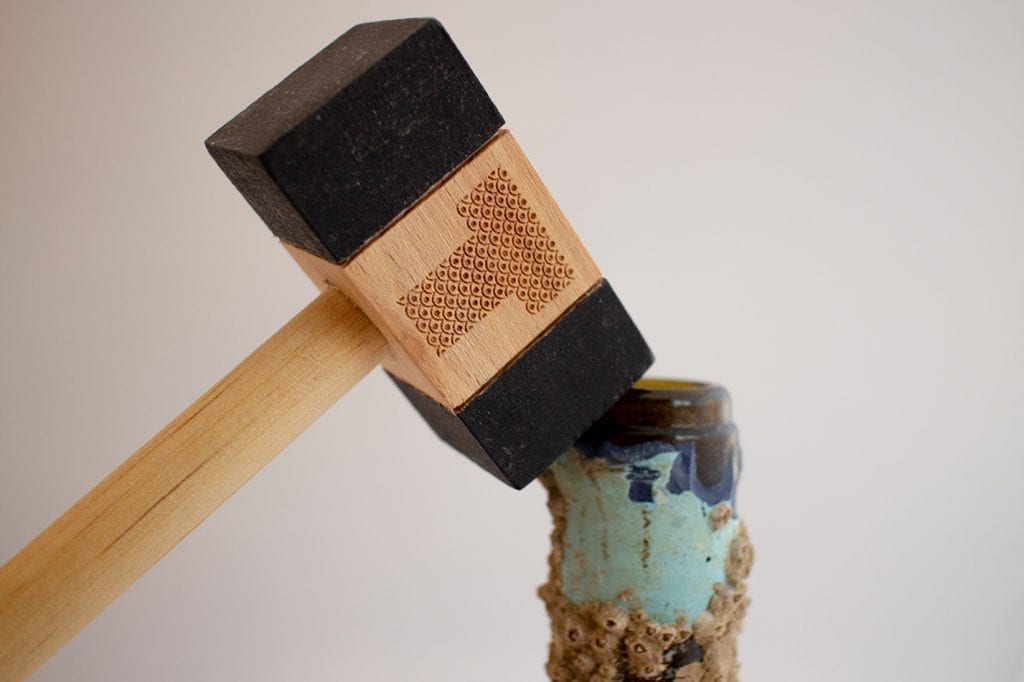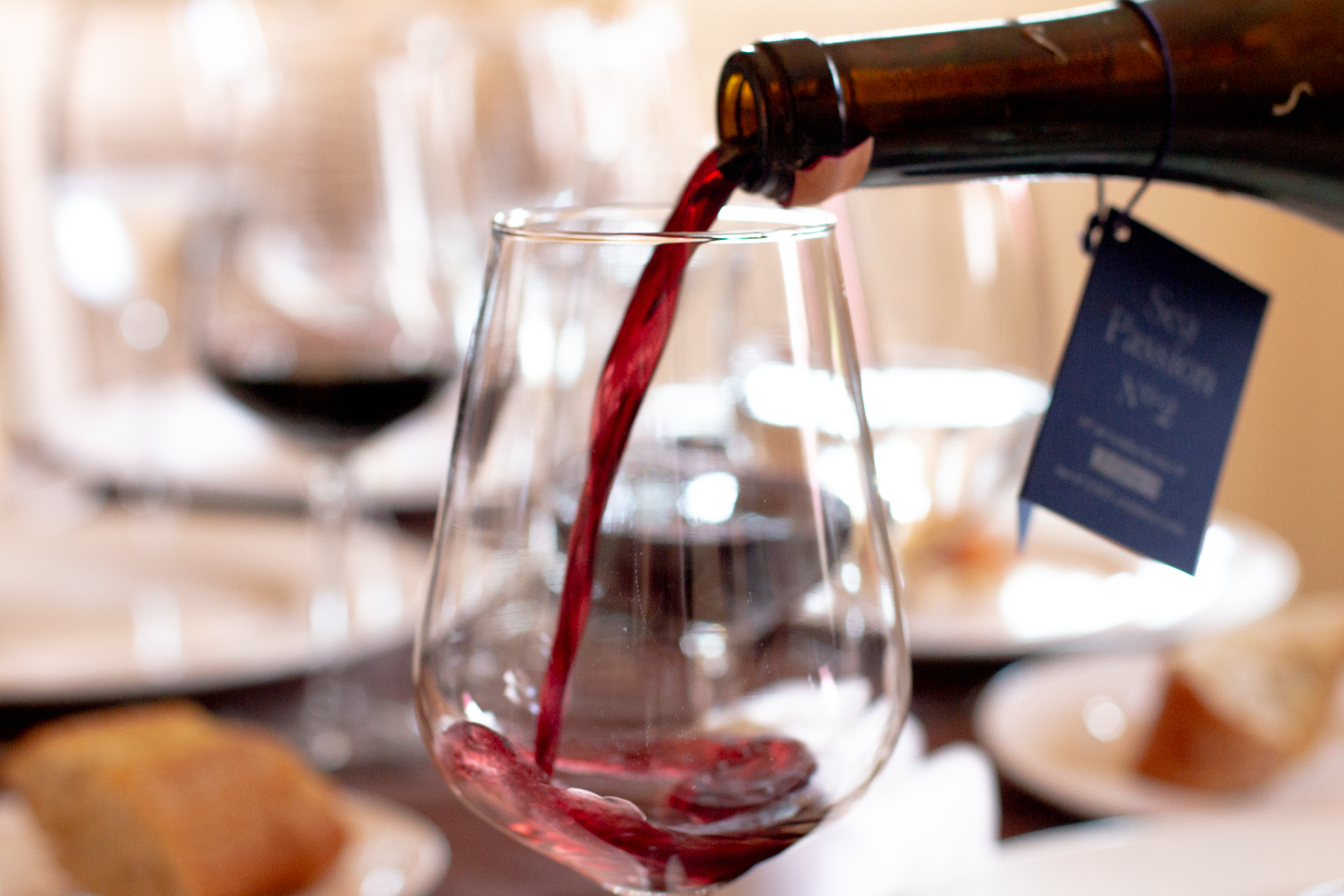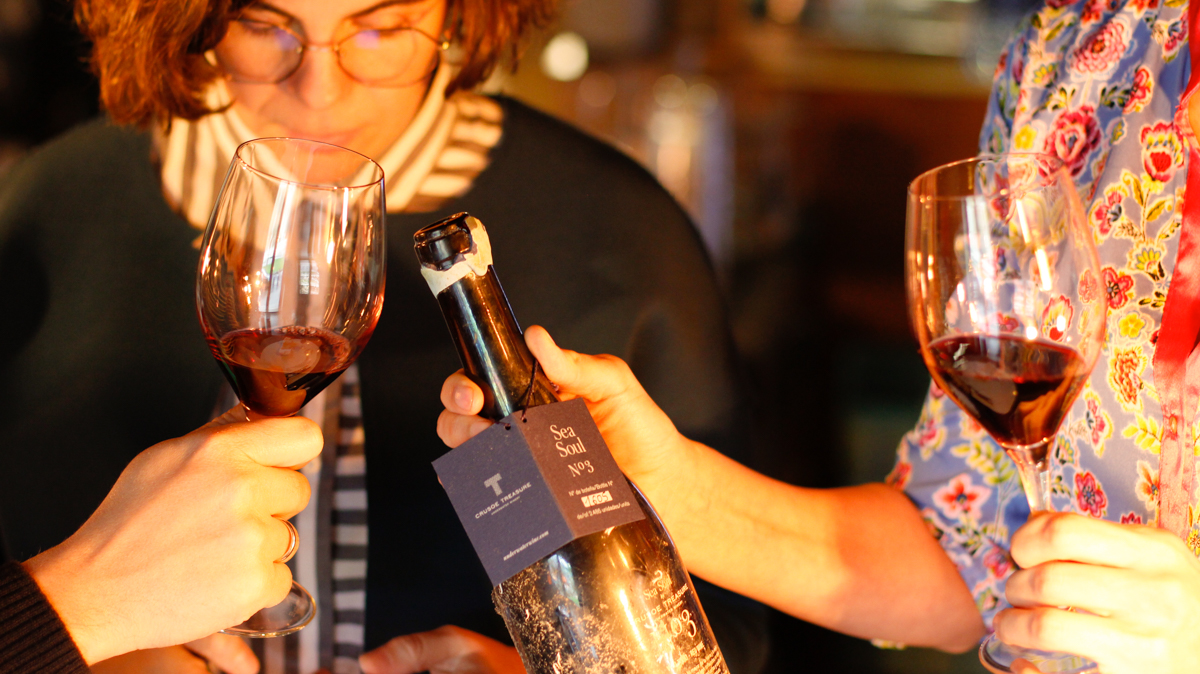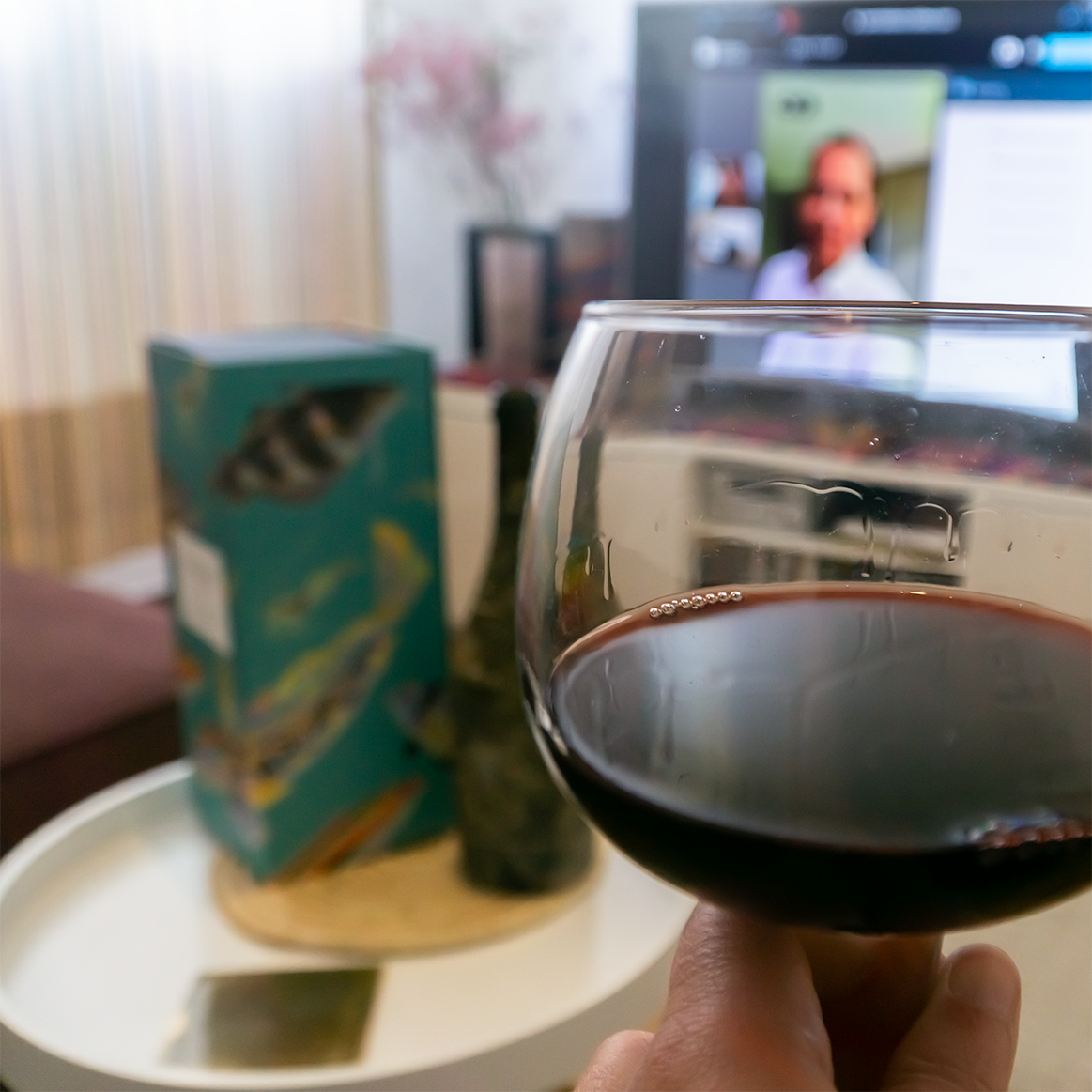Can anyone do a wine tasting without being an expert?
Can anyone do a wine tasting without being an expert? https://underwaterwine.com/wp-content/uploads/2020/12/MG_8743.jpg 1800 1200 Patricia Moreno https://secure.gravatar.com/avatar/d930572ad93721d821dba79bf0b5ddd8The answer is yes, don’t be afraid.
It’s much simpler than it may initially seem and moreover, it’s fun. You don’t have to be an expert to enjoy a wine tasting. In fact, each tasting is a world, the aromas and flavours that are appreciated in each wine vary depending on the person and the moment in which it is done.
The first thing you need to know is which are the senses that play an essential role in the tasting: sight, smell and taste, it is important to know how to take advantage of all three.
Before we start tasting one of the underwater wines, we will uncork the wine, breaking the sealing wax and removing the cork.

This will most probably show us the so-called “wine diamonds” crystals that can be seen on the part of the cork that has been in contact with the wine. They are not bad, but quite the opposite. They indicate that, during the production, the wine has not been stabilized or filtered, and therefore its evolution is more natural and potentially interesting. After suffering temperature changes under the sea, and because its evolution is constant, in exceptional circumstances such as those at the bottom of the sea, with continuous temperature changes, this crystallization occurs in the cork of the potassium bitartrate, natural salts present in the grape.
 These “wine diamonds” are more visible when the wine is older, and are considered a quality of the wine, which is why they receive this popular designation. They are also more visible in white wines, as white grapes have a higher level of potassium bitartrate. Sometimes it can precipitate to the bottom of the bottle, but this is not sediment.
These “wine diamonds” are more visible when the wine is older, and are considered a quality of the wine, which is why they receive this popular designation. They are also more visible in white wines, as white grapes have a higher level of potassium bitartrate. Sometimes it can precipitate to the bottom of the bottle, but this is not sediment.
The three phases of a wine tasting.
1. Using the eye, the so-called “visual phase”.
After uncorking and pouring a little wine into the glass we smell the cork. For this first phase we will need a well-lit place and a white base, (it can be a table, a napkin, a sheet of paper…) this way we will be able to appreciate well the colours of the broth.
At this phase we will be able to know the age of the wine by looking at its colour. Both red and white wines have tannin, an astringent substance that changes from colourless to a more yellowish tone when its ages, even to a golden colour.
In white wines it is easier to appreciate the yellowish tonality, if we observe a greenish yellow or straw tone it will be a younger wine, and in the older ones we will observe that golden tone.
On the other hand, in the case of red wines, we will need to tilt the glass and look at the edges. Other tonalities that indicate the age of a red wine are red and purple, which are destroyed over time and go from violet red to orange or brownish red.
In this first visual phase, we can also measure the density of the wine. To do this we move the glass slightly and look at the drops of wine that fall, the faster these fall the lower the density and therefore the alcohol content will be lower.

2. Using the sense of smell, the so-called “olfactory phase”.
The smell is essential to appreciate the wine well, since the smell is the most important variable of the taste. In this second phase the aroma of the wine will let us know what the wine is. In the case of the Crusoe Treasure underwater wines, the initial aroma we perceive can be closed, due to the time they have been under the rough Cantabrian Sea, but after a few minutes, they open up and evolve, in what Antonio Palacios calls a carousel of sensations both in the nose and in the mouth.
After uncorking and serving some wine in a glass we will first smell the cork. The second step of this phase is to bring the glass closer to the nose without moving it to capture all the aromas of the wine. Then we move the glass slightly so that when the wine is mixed with the oxygen it gives off more aromas and we can appreciate and differentiate all of them.

3. Taste phase
In this last phase there are four steps to tasting a wine.
Step 1: We will try to identify the four basic flavours, sweet, bitter, acid and salty, and see what the wine we are tasting reminds us of.
Step 2: The next step is to determine the texture, thanks to the touch. This way we will try to identify if it is a soft or silky wine or if on the contrary it is astringent or rough.
Step 3: When swallowing the wine, we analyse the third step, the retronasal route. The aim is to capture aromas using the mouth. We will make the wine bubble in our mouth with the head slightly downwards, we will open the mouth a little, breathing in air at that moment to pass that air through the wine, (it will make some noise, don’t be scared) and capture new aromas. Once we swallow the wine, if the flavours and sensations remain in the mouth, it will be a wine with a long aftertaste.
Step 4: And finally, the taste that remains after having swallowed the wine, will be the final process of the tasting. Depending on how long this taste that the wine leaves in the mouth lasts, we will talk about short, medium or long wines.
Thanks to the contributions of the sea in our process of underwater treasure, our wines are very round, long and surprising. They evolve clearly in the glass every 10 or 15 minutes, they get better with time. They continue evolving in glass even 24 hours after they have been opened, with unique silkiness and nuances.
In visual phase, the whites are very clean, and bright, with greenish tones. While the reds, tend towards more bluish and purplish tones.
On the nose, they can initially be very alcoholic, but after a few minutes, they begin to show their full potential, and freshness, reminiscent of fruit and new aromas, come and discover them. Sometimes they speak to us of shells, algae…
In the mouth, extremely smooth, surprisingly, because of the integration of the tannin, and being very glyceric, well assembled, pleasant, with very balanced acidity and a long finish.
If you want to experience a tasting with one of our wines, and share your impressions, we encourage you to make a virtual tasting with us or come and visit us.









